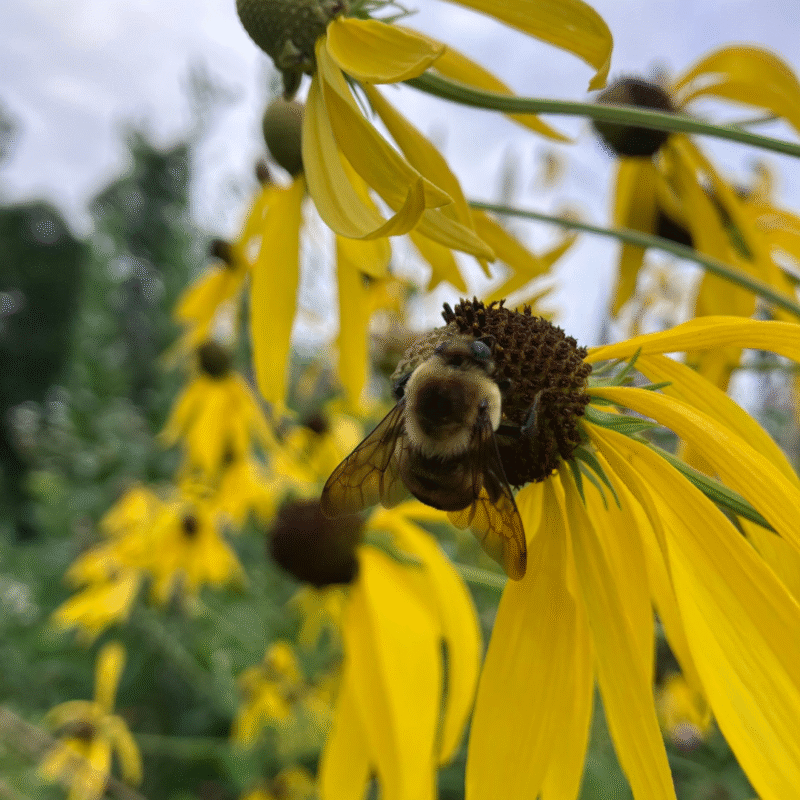
Two summers ago, Amy Lesher of Shoreview stood in her backyard imagining a transformation. What was once a patch of grass would soon become a tapestry of native flowers, alive with bees and butterflies. “I have absolutely loved every step,” Amy says. “Shopping for the plants was like a botanical treasure hunt. Now, in year two, it’s thriving and the plants are already spreading. I’m seeing way more insects and birds in my yard—even with this little addition!”
Amy is one of more than 12,000 Minnesotans who have turned lawns into vibrant pollinator habitat through Lawns to Legumes, a statewide grant program that helps residents create native plantings in their own yards. Launched in 2019 by the Minnesota Board of Water and Soil Resources in partnership with Blue Thumb and Metro Blooms, Lawns to Legumes provides up to $400 in reimbursement, design templates, coaching, and workshops to make pollinator-friendly landscaping possible for anyone.
A Small Patch, A Big Impact
Since its start, the Lawns to Legumes individual support grant program has helped residents install nearly 10,000 native planting projects across all 87 Minnesota counties—creating more than 11 million square feet of pollinator habitat and planting 20,000+ trees and shrubs. The program has trained over 10,000 people through webinars and workshops and engaged hundreds of volunteer coaches.
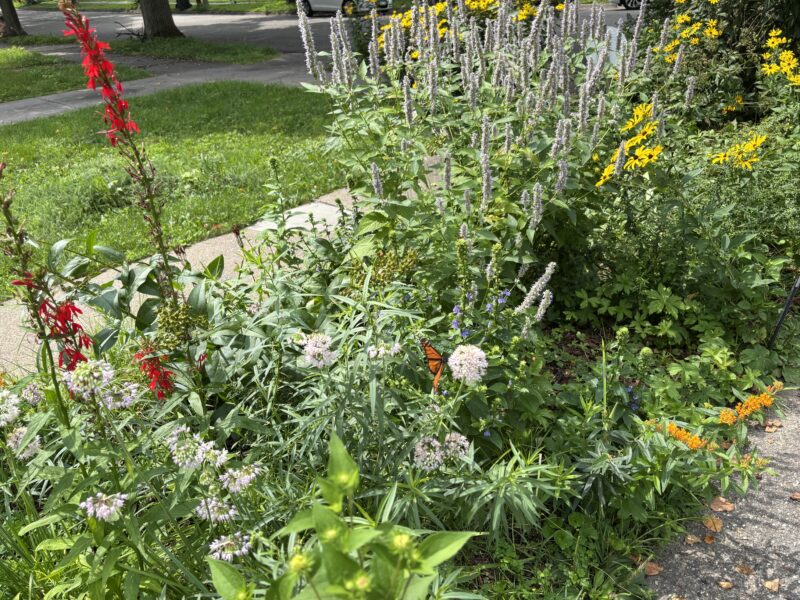
But these numbers tell only part of the story. “I especially liked knowing many other people were creating pollinator habitat at the same time as me, with tools and professional, experienced support,” says Ginny Halloran of Minneapolis. “It felt like we were all working toward something bigger together.”
This people-powered movement is changing how Minnesotans see their yards. Homeowners, renters, and neighbors are replacing monoculture lawns with buzzing meadows, pocket plantings, and flowering trees—each small effort adding up to a statewide network of habitat corridors that support pollinators and clean water.
Why Pollinators Need Us
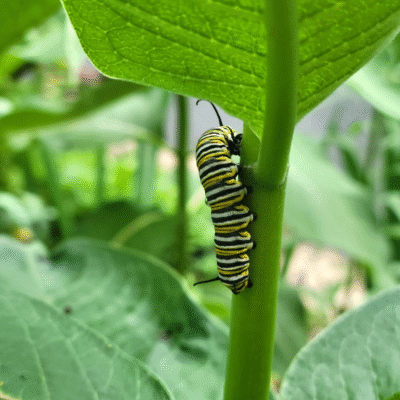
Minnesota is home to more than 500 species of native bees, along with countless butterflies, moths, and other pollinators. Many are in steep decline. Populations of the rusty patched bumble bee, our state bee, have dropped by 80% in the last 20 years. Monarch butterflies have faced similar losses. Pollinators rely on native plants for nectar and pollen; without them, ecosystems unravel.
Creating even a small patch of native flowers can help. A single flowering tree can provide as much food for pollinators as an entire garden. And with online resources, design guides, and optional volunteer coaches, you don’t need to be a master gardener to get started.
More Than a Garden
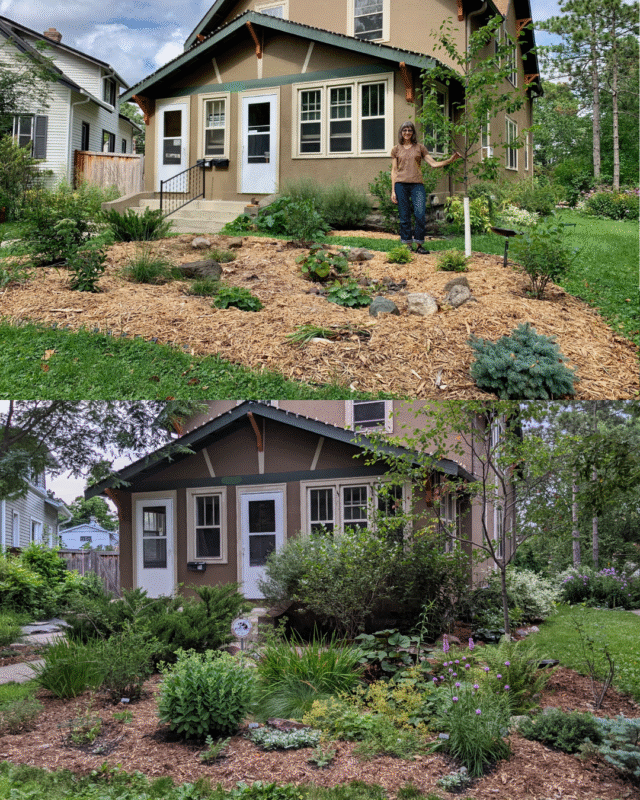
Participants describe benefits that go beyond flowers and insects. “I knew little about Minnesota native plants when I started,” says Cindy P. from Shoreview. “Now, I’m a native plants enthusiast.” Others speak of neighbors stopping to chat, songbirds returning, and the simple joy of watching daily changes in the garden.
For K. Sylvie Moon of Minneapolis, the program sparked a deeper commitment. With grant support in 2020, she turned her front lawn into a pocket garden with native shrubs and a serviceberry tree, redirecting rainwater from a downspout to nourish the planting. Installed during the pandemic, it quickly became a neighborhood conversation starter. “Human interactions were often outdoors, inspiring others to lend a hand or inquire about the creation of this 220-square-foot space,” she says. Over time, rabbits, shade, and shifting conditions brought lessons in flexibility, but the garden continues to thrive—drawing pollinators and inspiring even more eco-friendly plantings. “Plenty of wild visitors attest to the value of such adapted landscapes,” Sylvie reflects.
One Duluth participant reported seeing rusty patched bumble bees, hummingbirds, and even tiny frogs taking shelter among milkweed and blazing star. Together, these stories illustrate how Lawns to Legumes helps Minnesotans create habitat that grows community as much as it grows flowers.
Apply for a Spring 2026 Grant
Whether you’re a seasoned gardener or a complete beginner, you can be part of this movement. Any Minnesota resident with outdoor planting space can apply for a Lawns to Legumes Individual Support grant. Applications take just a few minutes and use a ranked lottery system that prioritizes key pollinator habitats and environmental justice areas.
Grantees receive up to $400 in reimbursement to help cover their project costs. Apply for a Spring 2026 grant by November 30!
Looking Ahead
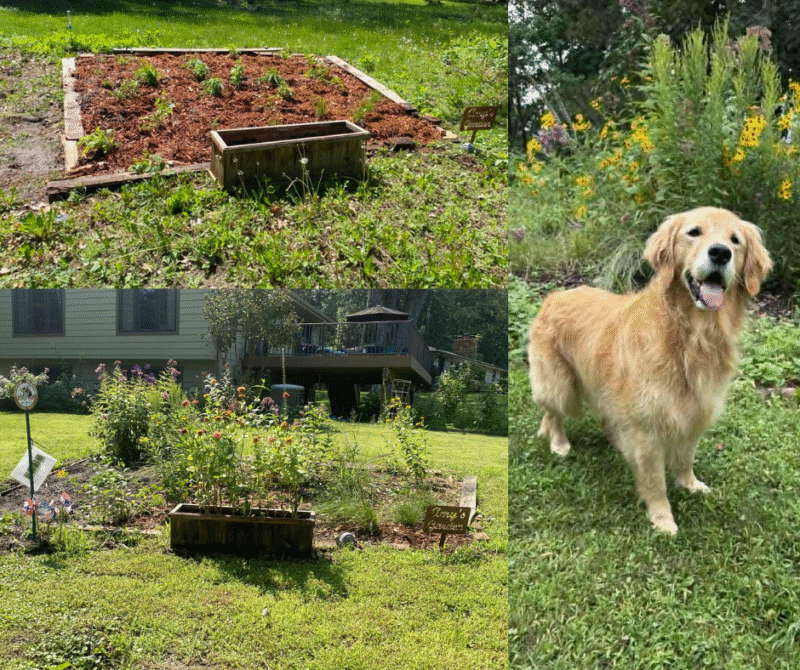
Lawns to Legumes isn’t going away—but the program may look different after Spring 2026. Current state funding supports the popular $400 reimbursement grants only through the Spring 2026 cohort. If you have not received a Lawns to Legumes grant yet, the Spring 2026 application is your opportunity to apply for a grant award to help cover project costs.
We’re exploring new funding opportunities to keep the momentum going. Even if grant funding pauses, the movement continues. Blue Thumb and partners will keep offering education, events, and resources to help Minnesotans create pollinator habitat. And whether or not you receive a grant, you can still access free planting guides, design templates, and community support to start or expand your pollinator garden.
From backyard gardens to neighborhood pathways, Minnesotans are proving that small actions add up to big change. As Amy’s thriving garden shows, even a modest patch of native flowers can create a haven for pollinators—and a deeper connection to the natural world, right outside your door.
Related Resources
-
- Apply for a Spring 2026 Lawns to Legumes Grant
- Share your pollinator habitat project on the Lawns to Legumes Garden Gallery
- Explore design templates and other free downloadables on our Resources Page
– Megan Reich, Metro Blooms Communications and Program Manager
